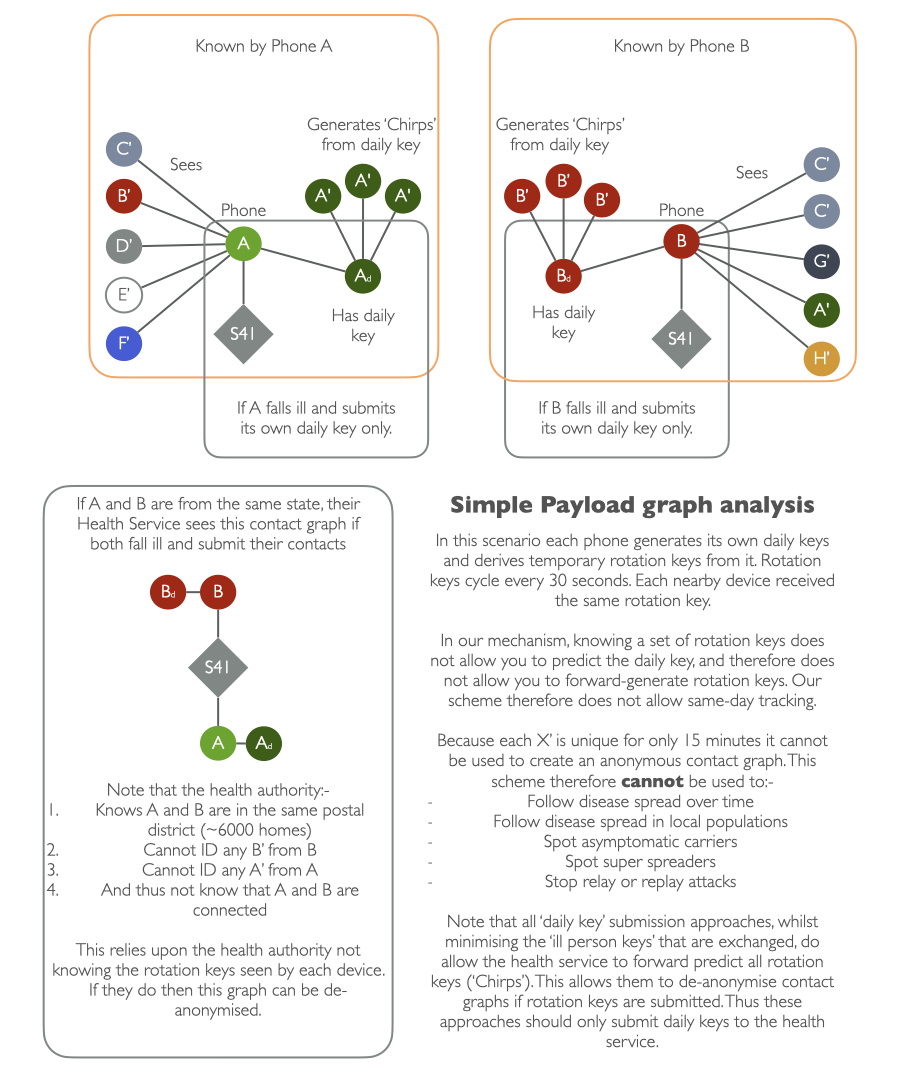Contact Tracing Simple inner payload
This inner payload allows for minimum information sharing - just large enough to enable contact tracing. This makes it simple, but it’s not as secure as the Herald Secured payload, and really only supports decentralised contact tracing.
Click here to View the Formal Specification for the Simple Payload

In particular the simple payload:-
- Doesn’t provide a consistent ID for the device the packet is exchanged with (not a problem for decentralised exposure)
- Doesn’t provide remote phone make and model, limiting local distance estimation and thus risk scoring
- Doesn’t provide verification of the outer packet’s validity itself (i.e. doesn’t allow a national authority to additional verify the outer packet signature)
- Does prevent replay and relay attacks
- Does allow verification of the remote contact having come from the right phone, if local history is persisted of contact events
- Does not prevent a brute force attack whereby random Contact IDs are generated and submitted by a compromised device
- Does not prevent the creation of an ‘ill person tracker’ as the Contact ID is sent in the clear between devices, and is the same for all devices it talks to at the same time
Simple inner payload content
In addition to the information in the Herald envelope header, the simple inner paylod provides the following data.
Note: All numeric data is big endian.
- Verification token (16 bytes) - The ClientID (16 bytes) of the other phone, encrypted using this phones local, ephemeral, private key (32 bytes) for the time period the outer envelope packet was generated in (allowing for local matching and verification)
Who knows what, and when?
Below is a visual representation of what each phone and health authority knows:-

Security analysis summary - CIA
Below is a simple security summary.
Confidentiality - No. The Contact ID can be intercepted in the clear by any Bluetooth device, allowing relay and replay attacks. Only the phone who generated the Contact ID will know who it belongs to. By rotating the Contact ID regularly (E.g. every 15 minutes) localised Bluetooth tracking can be reduced (E.g. adboard)
Integrity - Yes. Only the sequence of codes for a particular phone can be known by that phone for that time point as only that phone has the daily key seeds. Data could not be manipulated or predicted such that an individual phone could be targeted.
Availability - Maybe. Could be compromised by a brute for attack DDoS-ing the healthcare system using a fake network of pre-registered devices. Amplification attacks are possible in this approach. This can be somewhat mitigated by using a max number of notified contacts per ill person submission approach, but this doesn’t prevent the creation of a fake network with, say, 5 notifications each.
Non-repudiation - No. Neither the health authority nor receiving device are authenticated in this approach. The healthcare system and the transmitting phone also cannot verify that the person presenting the Contact ID is the one for whom it was initially transmitted to.
Formal Specification
Please see the Formal simple payload specification page for full details
Getting Started
To help you get started, see the documentation.
